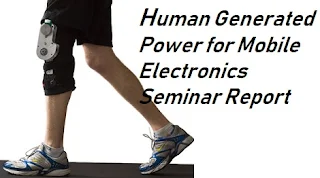Energy harvesting has grown from long-established concepts into devices for powering ubiquitously deployed sensor networks and mobile electronics. Systems can scavenge power from human activity or derive limited energy from ambient heat, light, radio, or vibrations.
This chapter will review trends in mobile computing over the past decade and describe how batteries affect design tradeoffs for mobile device manufacturers. This analysis leads to an interesting question: is there an alternative to batteries? Although the answer has many components that range from power management through energy storage, the bulk of this chapter will overview the history and state-of-the-art in harvesting power from the user to support body-worn mobile electronics.
Although many different techniques are available to harvest energy from various environments to power electronics, the amount of available raw energy (for example, sunlight, vibration, heat) and the surface area or net mass that the device permits limit the power yield in pervasive computing’s everyday habitat settings. With the exception of heel-strike harvesting in electric shoes or solar cells in bright light, available powers generally hover at mW or µW levels. Nonetheless, researchers are striving to marry more miserly power management techniques with electronics that consume less energy, enabling embedded devices to conduct more useful operations with the limited power that they can commonly scavenge. Accordingly, energy harvesting is an area of rapid development, and the day approaches when component life rather than battery charge will limit low-duty-cycle sensor systems.
Incoming Searches
A Power Generating System for Mobile Electronic Devices Using Human Walking Motion Seminar Report, Power generation, Humans, Legged locomotion, Batteries, Consumer electronics, Mobile communication, Energy consumption, Generators, Torque, Gears, Seminar Report 2018, Human Generated Power for Mobile Electronics seminar report, Energy Scavenging for Mobile and Wireless Electronics Seminar report, IEEE Report, BioMechanical Energy Harvesting Seminar Report, BioMechanical Energy, BioMechanical Energy Generation.


0 comments